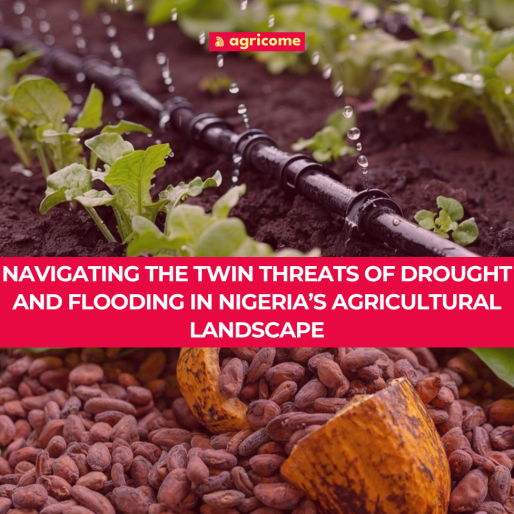As Nigeria’s agricultural sector grapples to meet rising food demands, the climate crisis is fundamentally reshaping the rules of engagement. The once predictable rainfall patterns are now erratic, placing farmers under immense pressure from both ends of the water spectrum — prolonged droughts and devastating floods. In 2022, Nigeria experienced catastrophic flooding that submerged over 500,000 hectares of farmland, wiping out entire harvest across the middle belt and southern regions. Meanwhile, farmers in the North-West and North-East wrestle with prolonged dry spells, delaying planting and stunting growth.
These twin threats- drought and flooding are not isolated. According to the World Farmers’ Organisation (WFO), up to 40% of potential crop yields are lost due to water stress- which arises from both deficient and excessive water occurring at critical growth stages. While irrigation is vital for reducing crop losses during dry spells, they must be complemented by robust flood management infrastructure to prevent runoffs and crop inundation. Yet, Africa’s agricultural water infrastructure remains critically underdeveloped.
Data from the African Development Bank (AfDB) and the Food and Agriculture Organization (FAO) reveals that only 6% of Africa’s arable land is under irrigation- a stark contrast to 37% in Asia, 14% in Latin America, and 9% in North America. This gap underscores the urgent need for integrated water resource planning that aligns with agroecological zones, seasonal variability, and long-term climate forecasts.
In Nigeria, the Federal Ministry of Agriculture and Rural Development reports that less than 1% of irrigable land is equipped with controlled irrigation systems. Meanwhile, effective flood control measures such as drainage channels, and retention basins are largely absent because agrarian communities lack the necessary infrastructure to manage these extremities.
What must be done
President Tinubu’s declaration of a state of emergency on food security highlights the need to urgently address long-standing inefficiencies undermining Nigeria’s agricultural productivity.
(1) Policy reform and private sector engagement: Governments must expand investments in resilient water infrastructure, including community-managed micro-irrigation systems, retention basins and drainage networks. Rural electrification, particularly through renewable off-grid solutions is key to powering irrigation pumps in farming communities. To accelerate scale, public-private partnerships must be mobilized to co-develop solutions and ensure these technologies reach grassroots farmers.
(2) Regional cooperation: Nigeria must lead efforts to strengthen cross-border water governance, ensuring fair and sustainable use of shared resources like the Niger and Lake Chad basins. Improved collaboration among neighboring countries will safeguard water access for millions of farmers who depend on it.
(3) Digital climate advisory systems: These provide farmers with timely, actionable information. By integrating real-time weather forecasting, satellite-based crop monitoring, and mobile advisory platforms, farmers can make informed decisions on planting, irrigation, and harvest schedules. Strengthening partnerships with research institutions and technology providers to deliver precision farming tools will enhance productivity.
(4) Drought- and flood-tolerant crops: Nigeria’s seed systems must shift toward climate-resilient genetic varieties that can withstand erratic rainfall and flooding. To achieve this, seed policy and research frameworks should prioritize the rapid evaluation, approval, and distribution of resilient crop varieties. Ensuring timely access to these seeds is critical for safeguarding yields and supporting farmer adaptation in the face of growing weather volatility.
